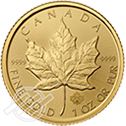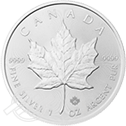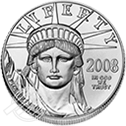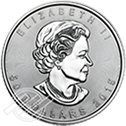Is Gold Worth More Than Diamonds?
Gold and diamonds. They’re both valuable and sometimes mentioned together. This begs the question: Is gold worth more than diamonds? And how do they stack up as investment options?
This guide will take you on a deep dive into physical asset ownership.
Gold and diamonds exist harmoniously in the finest jewelry, and they can both exist in your portfolio.
Comparing Gold and Diamonds: Which is More Valuable?
The first step to determining which is more valuable is to understand what makes gold and diamonds attractive.
Properties and Characteristics of Gold
Gold is the standard bearer for precious metals. It is known for its beauty, but gold’s properties make it much more valuable.
The rare element is malleable, ductile, non-corrosive, virtually indestructible, and conductive of heat and electricity.
Gold is easy to shape and work with. You can beat out 1 ounce of gold into a 187-square-foot thin sheet called a gold leaf.
Properties and Characteristics of Diamond
Diamond is a mineral made of 99.95% pure carbon. Its atoms form a crystal structure known as a diamond cubic.
This unique mineral is the hardest known substance. Diamond has the highest melting point of any substance—7,362 degrees. It also has the highest refractive index—a measure of how a ray of light bends.
Diamond is nearly indestructible. Chemicals do not affect diamond, which is so hard that it can only be scratched by another diamond.
And, of course, a finished diamond is stunningly beautiful.
Comparison of Rarity and Scarcity
You might think gold and diamond’s worth would come down to rarity and scarcity.
Not in this case.
Diamonds are pressurized carbon, and carbon is everywhere. It is the 15th-most abundant element on Earth, the fourth-most abundant element in the universe, and the second-most abundant element in the human body.
Diamonds are not rare at all. It is common to find small, raw diamonds that may have industrial use but are not suitable as gemstones.
Even high-carat, gemstone quality diamonds are fairly abundant.
Gold is significantly rarer than diamond.
That’s a big difference.
Determining Value: Factors to Consider
Answering whether gold or diamond is worth more comes down to factors beyond scarcity.
Remember, a thing is worth only what someone is willing to pay. Human nature plays a key role.
We’ll look at some of the outside forces that affect people’s perceptions—and therefore the value—of gold and diamond.
Market Demand and Trends
The pandemic was kind to diamonds. Restaurants closed. Travel halted. Any gathering or experience-based event was out of the question.
There were limited options on where to spend money.
At the same time, the government attempted to buoy the economy by injecting cash in the form of economic stimulus.
People were at home, spending more time together than they perhaps ever had. Love was in the air.
The diamond market flourished. The price per carat reached an all-time high in 2022.
Once the world opened back up, the demand for diamonds dropped.
Instead of turning to diamonds, people started funneling their spending cash to experience-based things—travel, restaurants, sporting events, concerts. Consumers clamored to get out of the house.
According to the Zimnisky Rough Diamond Index, rough diamonds prices are down almost 16% year to date as of late 2023, and down 26% from their all-time high.
Gold demand fluctuates according to what’s going on in the world.
Economic and geopolitical landscapes influence demand, as gold is used as a store of value and a safe haven when things get rough in the world.
Inflation has helped push demand for gold. Gold is sought out as a hedge against inflation. It is thought to preserve the buying power of the dollar.
Both consumers and central banks are buying gold.
Quality and Grading Standards
Gold and diamonds share a word in common—with one caveat. One is spelled with a “C” and the other with a “K.”
Both carat and karat are important terms in determining the value of each.
Gold’s karat measures the purity of a gold product. Pure gold is 24 karat. As other metallic alloy is added, the karat rating decreases.
The most common karat marks are:
- 24 karat. Pure gold. No other metals are mixed with the gold.
- 22 karat. Consists of 91.7% pure gold, 5% silver, 2% copper, 1.3% zinc.
- 18 karat. Made up of 75% gold, 15% silver, 10% copper
- 14 karat. Contains 58.3% gold, 30% silver, 11.7% copper
- 10 karat. Made up of 41.7% gold, 52% silver, 6.3% copper
Because it is pure, 24 karat is the most expensive gold. But pure gold is soft and damages easily. Manufacturers add other metals to harden the product so it lasts longer.
Diamond’s carat rating is one of the four C’s—carat, cut, clarity, and color. Together, these factors determine the quality of a diamond as a gemstone.
According to the Gemological Institute of America (GIA)—a nonprofit that is the world’s leading authority on diamonds—these are the four C’s and their relationship to the value of a diamond.
- Carat is the weight of a diamond. Generally, the larger the carat, the more expensive the diamond. A large-carat diamond is rarer than a smaller-carat diamond.
- Color has an inverse effect on the quality of a diamond. A chemically and structurally perfect diamond has no color. Color in a diamond is evaluated under special lighting and distinctions are often invisible to the naked eye.
- Clarity refers to the absence of inclusions—flaws—in a diamond’s structure. A trained diamond grader identifies the inclusions and blemishes in a diamond. The clarity scale includes six categories, and the grader assigns one of 11 grades.
- Cut of a diamond determines how that diamond’s facets interact with light. The goal of the diamond cutter is to fashion a diamond with proportions, symmetry and polish that return a magnificent delivery of light.
Influence of Cultural and Historical Significance
We’ve already learned that diamonds are not rare. We’ve also learned that gold is rare.
So why do we still ask, “Is gold worth more than diamonds?”
One word answers all our questions: marketing.
Large deposits of diamond were found in Kimberley, South Africa, in 1866. What became the De Beers company controlled all aspects of the find, and became the largest diamond producer. They controlled 90% of the world’s diamond trade.
By the late 1930s, De Beers searched for a way to expand their reach and jump-start sales. They turned to a New York-based advertising firm.
The firm tied diamonds to eternal love and represented diamond engagement rings as the symbol of that love.
The slogan “A diamond is forever” was born, and the demand for diamonds exploded.
As they are not rare, we see that public sentiment and emotional attachment drive the price of a diamond.
All is fair.
Practical Considerations: Usability and Maintenance
Gold and diamonds have multiple uses, providing value to consumers and industry.
We’ll look at those uses and their importance in the following sections.
Industrial and Practical Uses of Gold
Coveted since the times of ancient civilizations, gold is used in:
- Jewelry and adornments
- Coinage
- Dentistry
- Electronics
- Aerospace
Gold’s conductivity properties make it conducive to use in modern technology. Gold features prominently in many types of electrical connectors, cables, and cell phones.
Gold’s most common use is as a store of value. Central banks and governments no longer peg their currency to gold, but gold is still used as a reserve asset.
About 20% of the world’s gold is held in reserve and international payments in gold are still accepted by all nations.
Industrial and Practical Uses of Diamonds
Diamond’s hardness and durability make it the choice of any industry that cuts, drills, or polishes.
Diamonds are used in saw blades, drill bits, and grinding wheels. Diamond powder and paste are used for polishing.
Diamonds must also be used to cut and shape other diamonds.
Maintenance and Care for Gold and Diamonds
Gold and diamonds don’t need much maintenance and care. They are both nearly indestructible.
Neither reacts to most chemicals, and both are non-corrosive.
Pure gold is fairly soft, but any imperfections typically don’t affect the gold content, just the appearance.
Destroying a diamond takes another diamond.
You won’t find anything much tougher than that.
Investing in Gold and Diamonds
Gold and diamonds have a bona fide place in a long-term investment portfolio.
Non-traditional assets are not without risks, but their challenges differ from those of paper-based investments.
Potential Returns and Risks
Gold prices have increased roughly 65% over the last 10 years. Gold is openly traded daily on exchanges around the world.
Gold pricing is clear and transparent. There aren’t a ton of factors to sift through or dependencies to understand.
Diamond pricing is the exact opposite.
Some say diamonds have appreciated 30% over the last 10 years, which seems reasonable but is difficult to fully verify. You must be certain to compare apples with apples in the diamond world.
The murkiness of the diamond trade makes it difficult to pinpoint the value of a diamond, leading to investors questioning which is more valuable—gold or diamond.
As a portfolio investment, there is no right or wrong way to determine how much gold or diamond to hold.
It is an individual choice to base in part on your long- and short-term goals, risk tolerance, and current holdings.
Both real assets can be effective stores of value in the long term and have the potential for great appreciation.
The biggest risk in investing is timing.
Buying diamonds or gold at the top of the market may turn you upside down in the investment if you have to sell.
Long-Term Outlook: Predicting Future Worth
The long-term outlook for gold and diamonds depends on supply and demand.
As we touched on earlier, diamonds rocketed in value as other spending channels disappeared during the pandemic.
Investors and casual consumers found other things to spend on, and the diamond market has felt the brunt.
The diamond market faces a challenge from within—lab-created diamonds.
Scientists have learned to simulate conditions and create diamonds in the lab. Lab-created diamonds are not imposters. They look real, feel real, and contain the exact same elements of naturally occurring diamonds.
Lab diamonds are a threat because they are significantly cheaper than mined diamonds, and require fewer resources to produce.
Stubborn inflation and geopolitical unrest have kept gold prices steady.
Investors still feel the need for a safe haven asset and something real to store the spending power of the dollar.
Unrest in the Middle East, $4-plus gas, and high interest rates on borrowed money factor into investors’ moves into gold.
Should You Invest in Gold or Diamonds?
Long-term investing in gold and diamonds can be a great idea.
Physical assets balance a portfolio that is otherwise filled with paper-based investments.
Neither gold nor diamonds are going anywhere. They will probably never be worthless, and destroying them is nearly impossible. The gold and diamonds in your portfolio are the same gold and diamonds that have been on Earth forever.
Investors with an individual retirement account have an advantage.
You can easily transfer a traditional IRAs into a precious metals IRA that allows you to own gold inside the IRA.
If you’re 59 ½ and own a 401(k), or still own a 401(k) plan from a previous job, you can roll over that plan into a Gold IRA.
Gold IRA rollover and transfer are both tax-free and penalty-free.
The Gold IRA is a self-directed plan. You choose what you want and how much. IRA-eligible precious metals include selections of gold, silver, platinum, and palladium.
The account executives at Advantage Gold are ready to help you with your precious metals needs.
We will walk you through the Gold IRA process and show you how easy it can be to own metals on a tax-deferred basis.
For cash buyers, we will locate and directly deliver your metals to your door. It only takes about a week.
Click the link and let us know how to contact you, or call us today and an account executive will help you begin the process.
We look forward to your call.
Tags: is gold more valuable than diamonds, is gold or diamond worth more, which is more valuable gold or diamond


